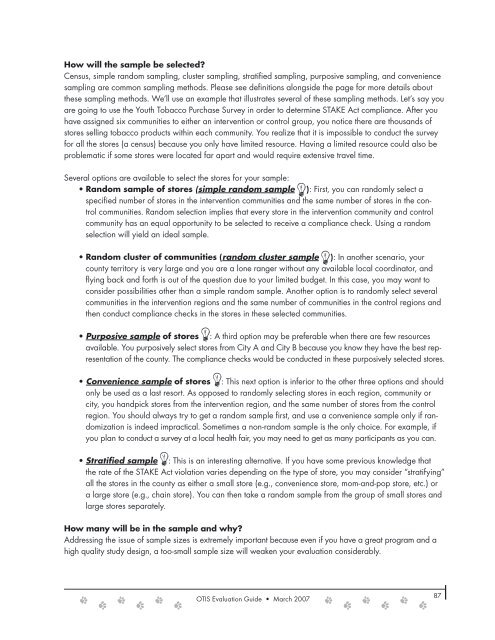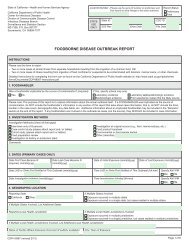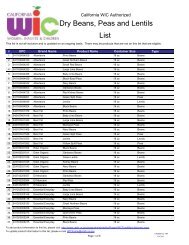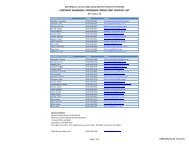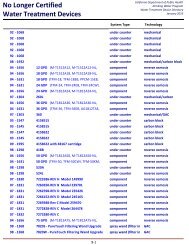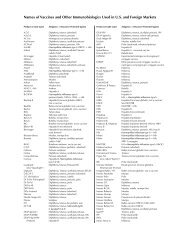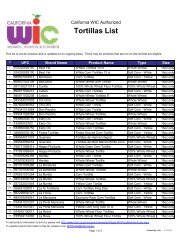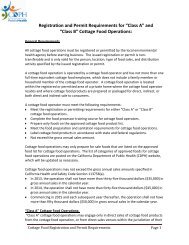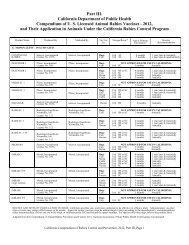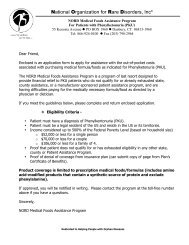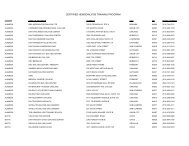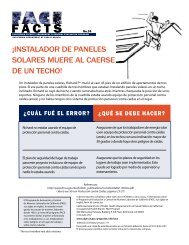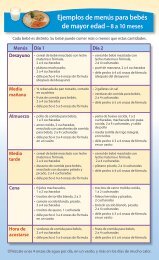OTIS Evaluation Guide (PDF) - California Department of Public Health
OTIS Evaluation Guide (PDF) - California Department of Public Health
OTIS Evaluation Guide (PDF) - California Department of Public Health
You also want an ePaper? Increase the reach of your titles
YUMPU automatically turns print PDFs into web optimized ePapers that Google loves.
How will the sample be selected?<br />
Census, simple random sampling, cluster sampling, stratified sampling, purposive sampling, and convenience<br />
sampling are common sampling methods. Please see definitions alongside the page for more details about<br />
these sampling methods. We’ll use an example that illustrates several <strong>of</strong> these sampling methods. Let’s say you<br />
are going to use the Youth Tobacco Purchase Survey in order to determine STAKE Act compliance. After you<br />
have assigned six communities to either an intervention or control group, you notice there are thousands <strong>of</strong><br />
stores selling tobacco products within each community. You realize that it is impossible to conduct the survey<br />
for all the stores (a census) because you only have limited resource. Having a limited resource could also be<br />
problematic if some stores were located far apart and would require extensive travel time.<br />
Several options are available to select the stores for your sample:<br />
• Random sample <strong>of</strong> stores (simple random sample ): First, you can randomly select a<br />
specified number <strong>of</strong> stores in the intervention communities and the same number <strong>of</strong> stores in the control<br />
communities. Random selection implies that every store in the intervention community and control<br />
community has an equal opportunity to be selected to receive a compliance check. Using a random<br />
selection will yield an ideal sample.<br />
• Random cluster <strong>of</strong> communities (random cluster sample ): In another scenario, your<br />
county territory is very large and you are a lone ranger without any available local coordinator, and<br />
flying back and forth is out <strong>of</strong> the question due to your limited budget. In this case, you may want to<br />
consider possibilities other than a simple random sample. Another option is to randomly select several<br />
communities in the intervention regions and the same number <strong>of</strong> communities in the control regions and<br />
then conduct compliance checks in the stores in these selected communities.<br />
• Purposive sample <strong>of</strong> stores : A third option may be preferable when there are few resources<br />
available. You purposively select stores from City A and City B because you know they have the best representation<br />
<strong>of</strong> the county. The compliance checks would be conducted in these purposively selected stores.<br />
• Convenience sample <strong>of</strong> stores : This next option is inferior to the other three options and should<br />
only be used as a last resort. As opposed to randomly selecting stores in each region, community or<br />
city, you handpick stores from the intervention region, and the same number <strong>of</strong> stores from the control<br />
region. You should always try to get a random sample first, and use a convenience sample only if randomization<br />
is indeed impractical. Sometimes a non-random sample is the only choice. For example, if<br />
you plan to conduct a survey at a local health fair, you may need to get as many participants as you can.<br />
• Stratified sample : This is an interesting alternative. If you have some previous knowledge that<br />
the rate <strong>of</strong> the STAKE Act violation varies depending on the type <strong>of</strong> store, you may consider “stratifying”<br />
all the stores in the county as either a small store (e.g., convenience store, mom-and-pop store, etc.) or<br />
a large store (e.g., chain store). You can then take a random sample from the group <strong>of</strong> small stores and<br />
large stores separately.<br />
How many will be in the sample and why?<br />
Addressing the issue <strong>of</strong> sample sizes is extremely important because even if you have a great program and a<br />
high quality study design, a too-small sample size will weaken your evaluation considerably.<br />
<strong>OTIS</strong> <strong>Evaluation</strong> <strong>Guide</strong> • March 2007<br />
87


